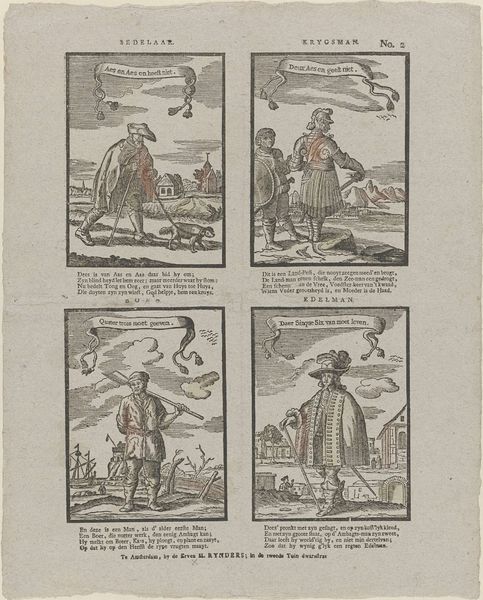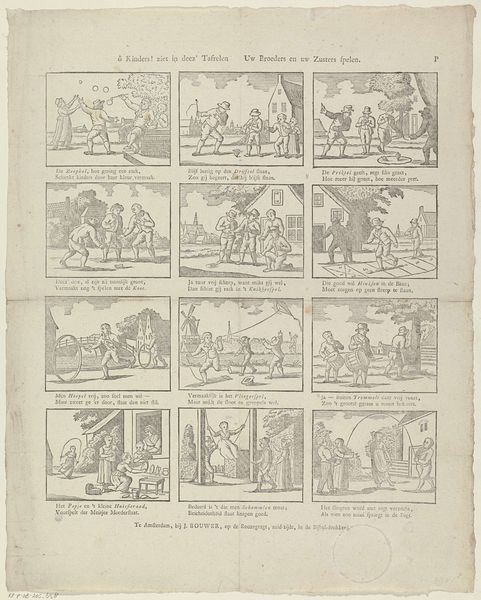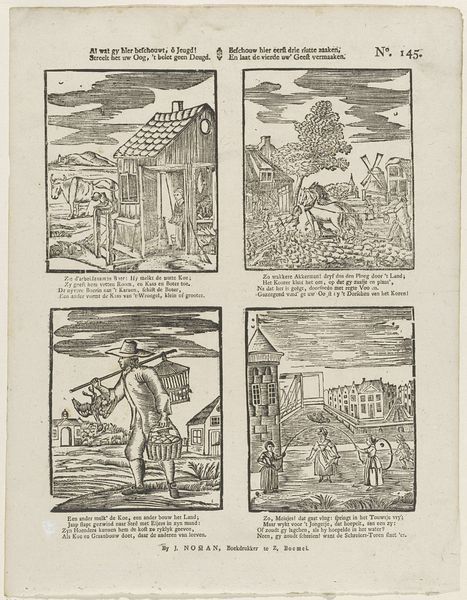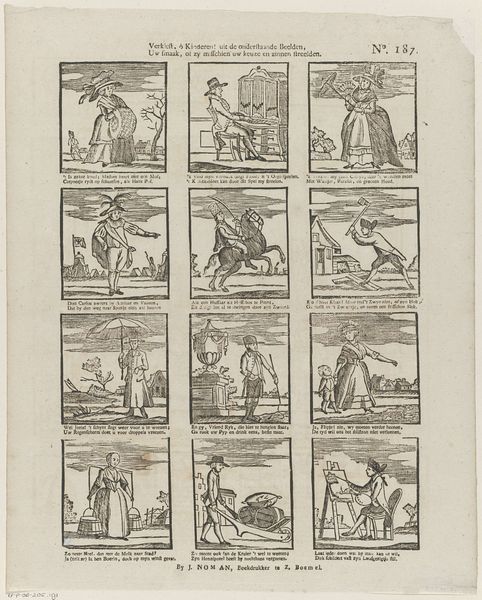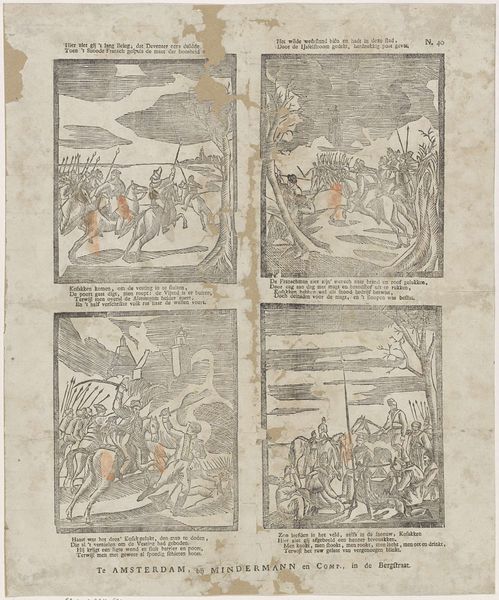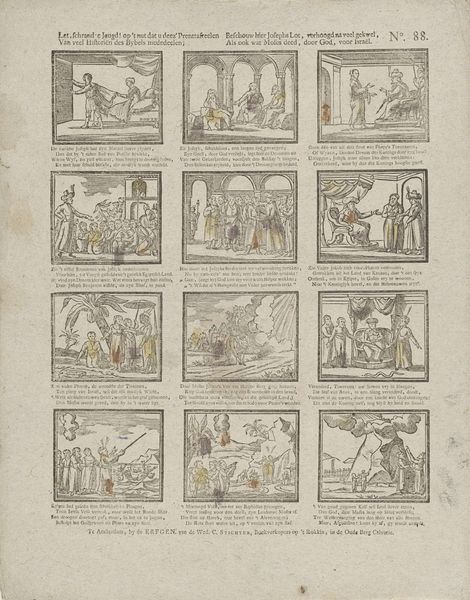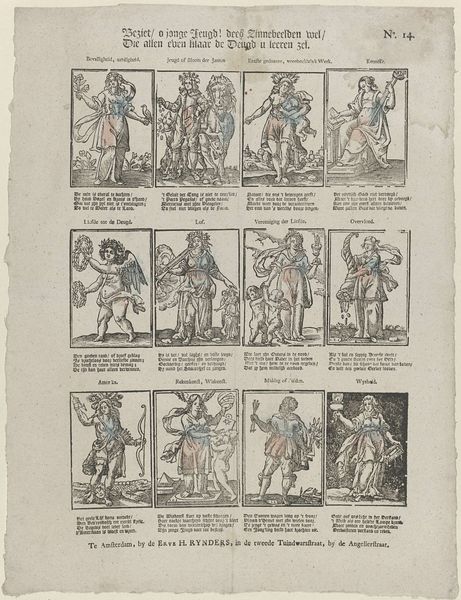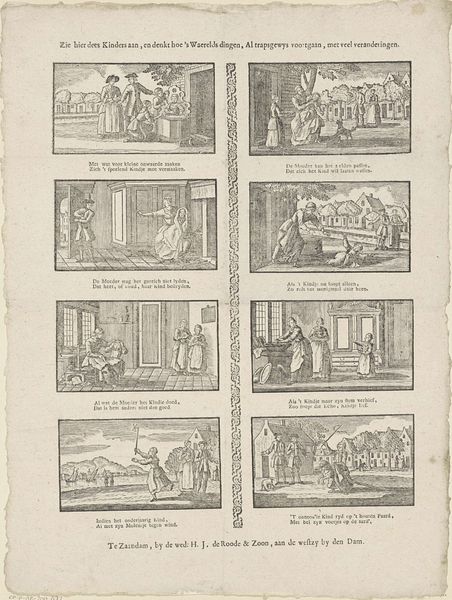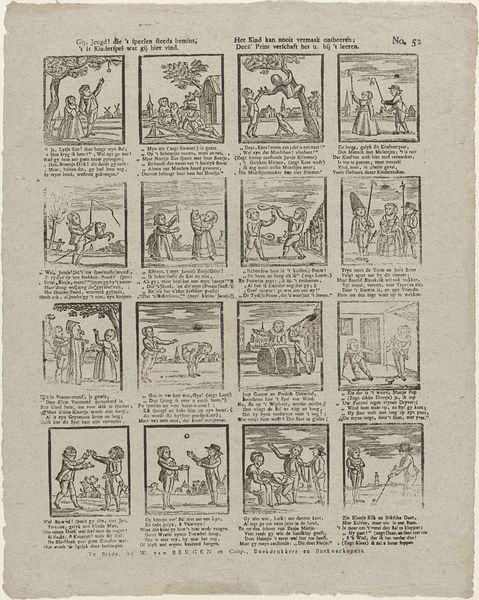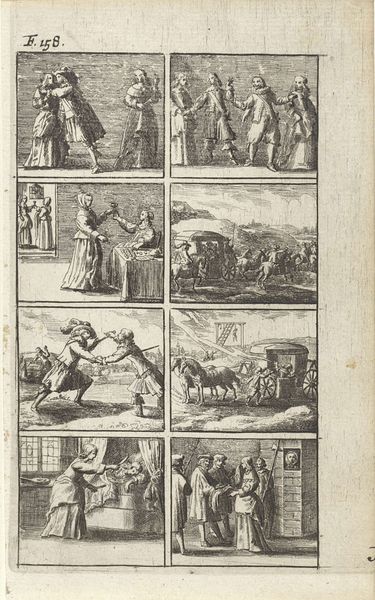
Kinderen hier zijn de vier staten der menschen / Welke denkt gy nu best voor u zelven te wenschen? 1725 - 1780
0:00
0:00
johannesiikannewet
Rijksmuseum
print, engraving
#
narrative-art
#
baroque
# print
#
figuration
#
line
#
genre-painting
#
engraving
Dimensions: height 390 mm, width 314 mm
Copyright: Rijks Museum: Open Domain
Editor: We're looking at "Kinderen hier zijn de vier staten der menschen / Welke denkt gy nu best voor u zelven te wenschen?" a print, an engraving to be exact, made by Johannes (II) Kannewet between 1725 and 1780. It's comprised of four panels each depicting a stage of life and their challenges, a sort of memento mori, I think? How do you interpret this work through a formalist lens? Curator: The division into four distinct quadrants immediately structures our visual analysis. Each panel operates as a self-contained unit, yet contributes to the whole. The lines are the dominating element, delineating forms and defining space. Note the consistent use of line – it lacks modulation, creating a flat, almost graphic quality across the entire print. How does that impact your experience of the piece? Editor: It makes the artwork seem… simpler, despite the details in each quadrant. Curator: Precisely. This linearity encourages us to read the image conceptually, rather than merely observe its mimetic qualities. Consider the visual weight of each section. Is there a balanced distribution of dark and light? How do the varying densities of the engraved lines influence our perception of depth and form within each scene? Editor: The top two panels seem brighter than the bottom two because there is less hatching overall. That makes sense given the subject, that the upper stages of life are supposedly "lighter" with fewer worries. Curator: An astute observation! And it is through such minute consideration of the formal elements, of line, composition, and distribution of tone, that we begin to unravel the structure embedded in this early print. Considering what we discussed, is the artistry residing only in subject matters, or the structural compositions in visual formation? Editor: Definitely both, but more about visual presentation overall. Thanks. Curator: My pleasure. It’s in the interplay of such formal elements that the power of visual art truly resides, regardless of its explicit subject.
Comments
No comments
Be the first to comment and join the conversation on the ultimate creative platform.

